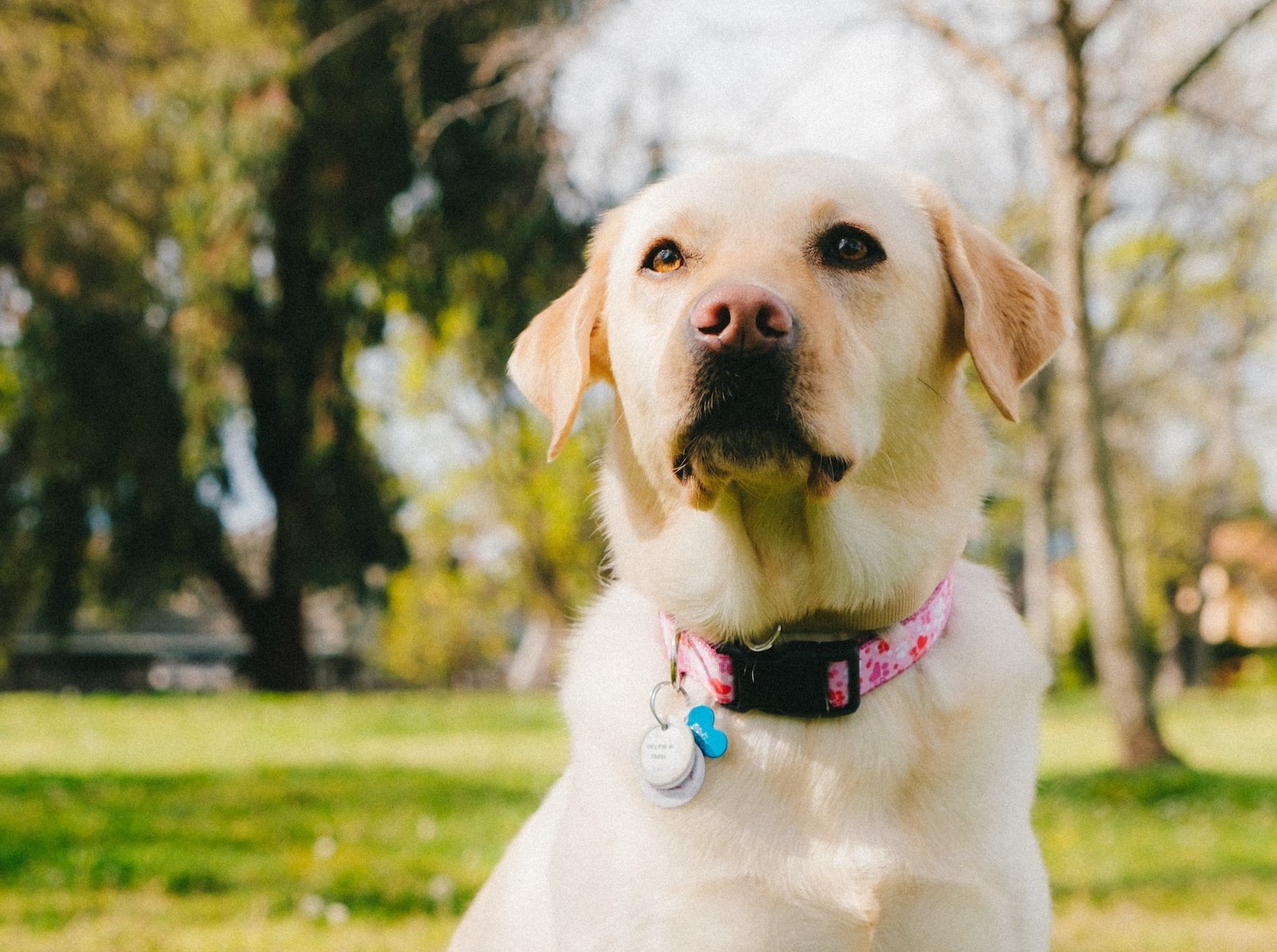Table of Contents

Disclaimer: I am not a vet, but an enthusiastic pet owner with a diverse knowledge of dogs, cats and other pets. Writing well researched articles recommending dog friendly products to in-depth guides. Please seek a certified vet for a professional opinion on your dog, these articles are written from my own research and opinions. Please read our Terms and Conditions for more! As an Amazon associate I earn from qualifying purchases.
Labradors are undoubtedly one of the most beloved dog breeds in the UK, with well over 1 million registered pups. Known for their friendly nature, loyalty, and playful personalities, the Lab tops the list in nearly every category.
However, among the various characteristics and that make Labradors so interesting, one particular question is often asked: Can Labradors communicate with us? Do they really understand us?
In this article, we will explore how Labradors use their facial features to convey and express their feelings and opinions.
Do dogs have eyebrows?
Yes, dogs do have eyebrows. Through domestication dogs have developed new facial features and stronger muscles around the eye.
Some dogs have more distinctive brow ridge bones which are covered in different coloured fur or patterns. For example, the brow ridge bone is more prominent on a Rottweiler thanks to their unusual patches of fur.

Credit Unsplash.com User @Brandon Atchison
Like Labradors, Rottweilers have a distinctive face and strong eyebrow muscles. But it does help having unique fur markings.
Why do dogs have eyebrows?
Eyebrows are important for humans, they help aiding facial expressions, protecting the eyes from sweat and debris, and conveying emotions. They contribute significantly to our ability to communicate non-verbally.
In dogs, facial expressions play a vital role in communication and conveying behaviors. Dogs developed eyebrows during the domestication of wolves (mans’ best friend) as a way to show affection and obedience towards humans.
Dogs can not only show affection towards humans, but they can manipulate situations and show emotions. Like for example: Raising their eyebrows, the classic “puppy eye” as a demand for attention or getting what they want. Or frowning, as a way to concentrate on objects or convey sadness. Remember dogs are highly sociable animals.

Credit Unsplash.com User @Brandon Atchison
In the picture above, you can see how this Lab is clearly raising their eyebrows and fixating their eyes on an object. Clearly demanding for attention or a signal of manipulation.
Dogs can communicate very well through the use of their facial features, especially their eyebrows.
Do Labradors have eyebrows?
The short answer is yes, Labs have eyebrows above their eyes. Labs have developed strong brow muscles along with a brow ridge bone, allowing them to communicate better with humans through their facial features.
Now for the long answer: Labradors have one of the most distinctive faces from any breed and like all dogs, Labradors have a remarkable ability to convey emotions through facial expressions, primarily utilising their large eyes, ears, and mouths.
Labrador Retrievers typically have dense, short fur that covers their forehead area, extending to the upper part of their eyes. This fur can vary in color and thickness, resulting in contrasting shades that can mimic human eyebrows. These fur patterns, often referred to as “eyebrows,” can give Labradors a more expressive and human-like appearance.
Labradors are renowned for their warm and gentle eyes. Labradors possess a wide range of eye expressions. When happy or excited, their eyes may appear bright, alert, and full of life. During moments of sadness or concern, their eyes may convey a more pensive or soulful expression.
Nonetheless, it’s worth noting that a Labrador’s ability to express emotions is not solely reliant on the presence or absence of eyebrows. The position of their ears, mouth shape, and body language also play crucial roles in conveying their feelings.
The Labs’ facial expressions
Research suggests that dogs have a great ability to understand and respond to human emotions. Studies have shown that Labradors can interpret human facial expressions, particularly on the eye region. Their sensitivity to human emotions allows them to provide support and companionship.
Similarly, Labs’ have evolved to communicate with their human counterparts through their own facial expressions. While Labradors may not have anatomical eyebrows like humans, their facial muscles are capable of creating various expressions, enabling them to communicate joy, sadness, curiosity, and more.
How do Labs communicate with their eyebrows?
Labradors are known for their high levels of companionship and ability to show emotion. This enables them to communicate with their facial features and body language. Labs’ are able to communicate using their eyebrows to display needs, wants and convey expressions and feelings. The distinctive face of a Labrador is easy to read, even for non-dog owners.
Labradors are very good at communicating with their facial features and showing their feelings towards humans with their eyebrows. Like for example:
1. The Labrador eyebrow raise

Credit Unsplash.com User @David
The most common way your Lab will try and communicate with you is with the eyebrow raise. Raising their eyebrows could be a sign that your Lab is paying attention to you or is curious about something you’re doing. They may be trying to gather more information or understand your actions.
Labs’ may raise their eyebrows as a way of seeking reassurance or approval from you. It could be a way for them to communicate their desire for positive feedback or to gauge your response in a particular situation.
2. The Labrador frown

Credit Unsplash.com User @Stuart193
Labradors do not naturally frown in the way humans do. A Labradors frown is often misinterpreted due to their facial structure. Some Labradors may have naturally furrowed brows or a slight downward curve to their mouth due to the specific arrangement of their facial muscles. This can create an appearance that resembles a frown, even though it may not necessarily reflect the dog’s emotional state.
However, it’s also common for Labradors to frown if feeling stressed, anxious, or in pain. They might display certain facial expressions that can resemble a frown. This can include a tensing of the forehead or a tightness around the eyes and mouth. It’s important to observe the overall body language and behavior of the dog to understand if there are underlying issues causing distress.
3. The Labs’ resting face

Credit Unsplash.com User @Unkown
The resting face of a Labrador is often associated with sadness. But it’s often not that at all. When a Labrador is at ease, their facial muscles tend to be relaxed, resulting in a neutral or calm expression. Their forehead may appear smooth, and their eyes may be partially closed or fully open but relaxed.
A resting Labrador’s ears are typically in a natural position, hanging down or slightly to the sides. They are not pulled back or flattened against the head, which can indicate fear or anxiety.
Can Labradors understand us?
So far we’ve learnt that Labradors use their eyebrows to control and convey emotion. But can they understand our emotions too?
Labradors are highly intelligent dogs with excellent social and communication skills (which is why they make good family dogs). While they may not understand the language we speak, they can certainly understand and interpret human facial features, commands and body language. Here are a couple of other ways dogs understand us.
- Body Language: Labradors are skilled at reading human body language. They can pick up on facial expressions (even eyebrow movements), hand gestures, and posture to understand what their owners are trying to tell them.
- Tone of Voice: Labradors are sensitive to the tone of voice used by humans. They can distinguish between different tones, such as a happy, excited voice versus a commanding voice. They usually respond to the tone, meaning they understand the emotional content behind the words.
- Training: Labradors are known for their trainability and willingness to please their owners, especially when their young. Through consistent training and repetition Labradors can pick up and understand humans, growing their relationships.
- Contextual Understanding: Labradors are able to understand context. For example, they can associate the sound of a leash being picked up with the upcoming activity of going for a walk. They can also recognise significant objects, meaning playtime.
Final Thoughts
While Labradors may not have eyebrows in the same way humans do, their facial expressions are able to signal their owners, their wants needs and wants. The large brow ridge bones and strong facial muscles allow the Lab to communicate better, adding to their already delightful and expressive faces.
Labradors don’t just communicate through their eyebrows. Emotions are conveyed through a combination of eyes, ears, mouth, and body language, allowing us to forge deep and meaningful connections with these lovable companions.
Remember, a Labradors overall expressions and body language provide a deeper understanding of their emotions.
Labradors are able to convey their feelings much better than other breeds thanks to their ability to show facial expressions, so count yourself lucky Labrador owners!
FAQ
Q: How can I calm my dog down when their anxious?
Dogs can become anxious from loud noises, abandonment and strange people/children. But their are a number of products and tips which can alleviate some stress from your dog.
Dog calming jackets for example are are used to help calm and soothe dogs during times of stress or anxiety. These jackets apply gentle, constant pressure to the dog’s torso, which is believed to have a calming effect on the nervous system.
Q: Do dogs have whiskers?
Yes, dogs’ typically have whiskers in 4 different locations. Although on some breeds they are clearer to see. Whiskers usually grow around the mouth and above the eyes, they assist the dog with movement, sensing and vision.
Q: Are the “eyebrows” on Labradors essential for their communication?
While the presence or absence of eyebrows does not determine a Labrador’s ability to communicate, their facial expressions, including the eyebrow-like fur patterns, contribute to their overall range of expressions. Labradors rely on a combination of facial features, including eyes, ears, mouth, and body language, to convey their emotions and connect with humans.
Q: Can I interpret a Labrador’s emotions solely based on their eyebrows?
No, interpreting a Labrador’s emotions solely based on their eyebrows would be incomplete. It’s important to consider their entire face, including eyes, ears, and overall body language, to understand their emotional state accurately. These elements work together to provide a more comprehensive understanding of a Labrador’s expressions.
Q: Are there other dog breeds with similar eyebrow-like fur patterns?
Yes, Labrador Retrievers are not the only breed with fur patterns that resemble eyebrows. Some other dog breeds, such as the Rottweiler, Boxer, and Bernese Mountain Dog, can also exhibit similar fur patterns above their eyes, creating the appearance of eyebrows.
Q: Can I trim or shape a Labrador’s fur to enhance their eyebrow appearance?
It is generally not recommended to trim or shape a Labrador’s fur to enhance the appearance of eyebrows. Altering a dog’s natural fur can have unintended consequences and may not be in the best interest of their well-being. It’s essential to prioritize the health and comfort of your Labrador when considering any grooming practices.


8 thoughts on “Do Labradors Have Eyebrows?”
Comments are closed.